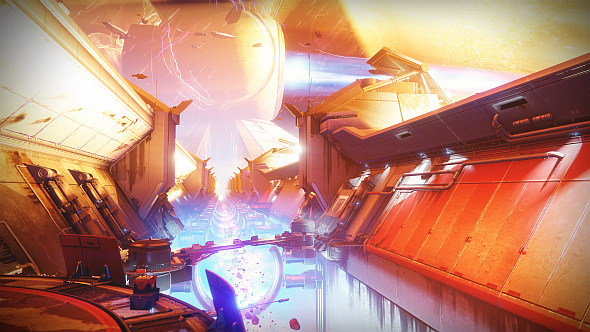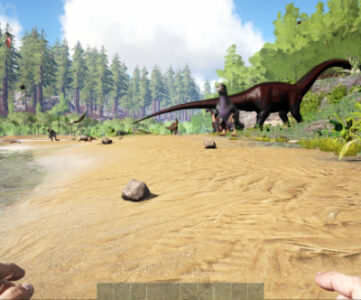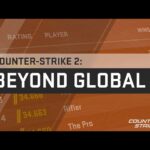[ad_1]
Destiny is a series that wants universal appeal. It strives for a Teen rating and takes the FPS – arguably gaming’s most popular genre – as its foundation. Built atop that is a sprawling game that cribs many different ideas in a bid to offer something to everyone. Hence, a challenge for you is expectation management: if you are a fan of the traditional single-player FPS, you might be more interested in the campaign than the raid, and vice versa if you like your MMOs. With this in mind, I thought it would make sense to review each of Destiny 2’s ‘modules’ in turn.
Related: check out our Destiny 2 PC performance review.
The Campaign
Destiny 2 starts promisingly. Its opening mission, in which villain Dominus Ghaul attacks humanity’s Last City, is as bombastic as the next is sombre (though it occasionally hits melodrama when shooting for poignancy). In audiovisual terms, this is best-in-genre stuff; angry stormclouds fill Bungie’s famous skyboxes, highlighted orange with missile fire. Detailed raindrops heap on the pathetic fallacy as you flee the City through a snowy mountain range. The campaign’s climax is equally strong, with the final three missions featuring a fun tank, and one of the most astonishing settings I have ever seen in a game.
Indeed, the fact that graphics, environments, and art direction generally are so crucial to Destiny 2’s appeal is an important reason to get it on PC – do crank up the field-of-view to drink in as much of its majesty as possible. The magnificent soundtrack also comes to the fore during the campaign, raising goosebumps as it swells in sync with gameplay.
It is a shame, then, that said gameplay rarely matches the sights and sounds enfolding it. It is always atmospheric, but simple enemies, static environments, and trivial objectives make for one-note action, especially in the middle half. Destiny 2’s campaign simply cannot compete with the recent glut of good games in this genre; its set-pieces have none of the intricacy of, say, Doom’s puzzle-like arenas, and Titanfall 2’s breathless wall-running far outclasses its floaty platforming.
Destiny 2 seems to want you to feel empowered, not challenged. Veteran shooter fans will blow through it all with ease, and in a bizarre change from the original, you cannot raise the difficulty until after your first playthrough. The point is further rammed home by subclass quests that give you unlimited Super abilities, which is like running around in God mode back when cheats were a thing. None of this is to say the naked power fantasy isn’t dumb fun: blowing stuff up with your space magic certainly scratches an itch, as does the punchy moment-to-moment gunfeel, which Bungie have done a terrific job of transplanting to PC. But even being a badass gets old after a while.
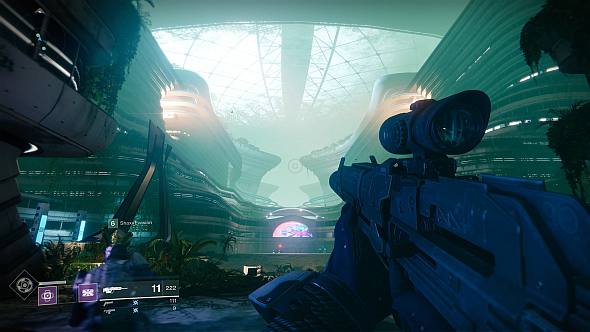
On the narrative side, everything you have heard about the original Destiny’s story is true: it was nonsensical and dull. The sequel is a definite improvement, but just because it clears a low bar does not mean it is any good by normal standards.
As a villain, Ghaul has potential: he is a tyrant with an inferiority complex, a space-age Napoleon who led a coup against an ancien régimehe saw as decadent and corrupt. His attack on the City is a bid to claim the source of your powers, a boon usually granted by Destiny’s big white ball, the Traveler. Ghaul could take it, but such is his need to prove himself that he would rather earnit, much to the vexation of his traditionalist mentor, the Consul.
Interesting stuff, right? But this is all setup with no payoff: why was Ghaul not worthy? It is the central question of his character, but it is never answered. When he asks the Speaker – who claims to represent the Traveler’s will – he is rebuffed with a line every bit as frustrating as the original game’s infamous “I don’t have time to explain why I don’t have time to explain.” It’s as if, when Luke asked Obi-Wan what the Force was, he had replied: “buggered if I know.”
It is one of several cringing nadirs in dialogue that, even at its best, rarely rises above the serviceable. Ghaul even paraphrases the ultimate villain clichéwith the line “we’re not so different, your Traveler and I,” and both my face and palm are still stinging from the impact. As a fan of Destiny’s lore, its continually inept delivery is getting very tiresome.
Mid-game PvE, aka, The Grind
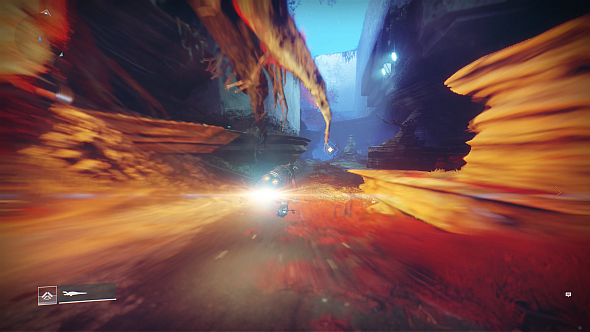
When the campaign is done, the game unfolds: You can return to each of the four planets to search for treasure chests, go spelunking in dungeon-like Lost Sectors, or tackle a healthy number of side-quests. You can also complete public events – quick challenges that nearby players can join. Finally, there are strikes: three-person cooperative missions with more complex mechanics than you will see in the campaign.
Destiny 2’s strikes are the best in the series. The Pyramidion, to name my favourite, has you dancing between lasers on a dive into a menacing alien construct that could have been designed by M.C. Escher. It is great.
But good luck getting to play it. All strikes are grouped in a single playlist, which chooses the next at random. Such playlists existed in the original, but you could also choose strikes individually. Dropping this option presumes you are not interested in playing a specific activity for the pure fun of it, but that you just want to run on a loot-dispensing treadmill. The substanceof what you are playing is presumed to be so unimportant to you that it is literally randomised.
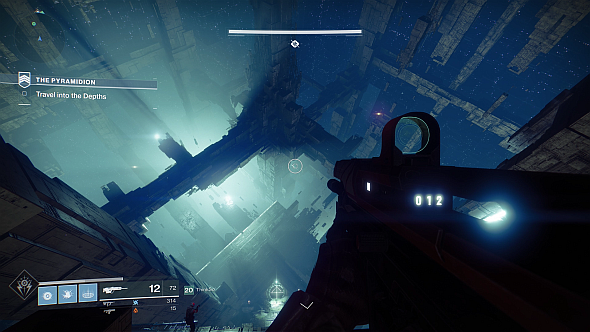
This can be frustrating if you are keen to try one strike, or sick of another. RNG doesn’t care, and this is how you get leavers. I only know what the Pyramidion is like because Bungie picked it to show at the PC preview event – I had never played it before, despite having maxed a character on PlayStation 4. And no, I will not sit in the strike playlist until it pops up, because I do not want to be a dick and leave when it hands me The Inverted Spire yet-a-freaking-gain.
This is all academic anyway, because chances are you won’t hang out in the strike playlist long enough to tire of any of them. Any intrinsic value in strikes or other world activities is eventually smothered by the extrinsic motivation of playing for rewards: as in most MMOs, Destiny 2’s ultimate goal is to hit the power cap by replaying content for loot, and right now, grinding public events is far more efficient than anything else, especially if you complete their ‘heroic’ objectives. Thus, unless you care nothing for progress, Destiny 2 nudges you aboard the dullest treadmill of all. This is why grind is still a problem, despite Bungie’s attempts to make Destiny 2 more generous with its loot.
The Raid and endgame
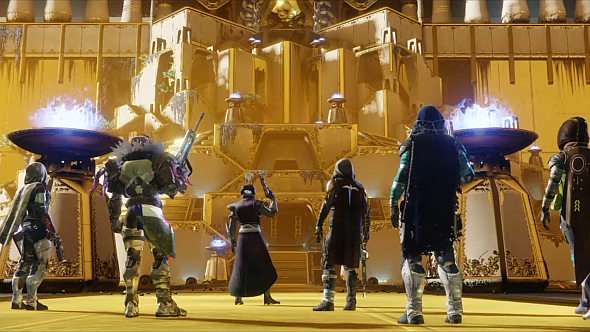
At a certain gear level, normal drops slow down, and further progress comes by completing your weekly Milestones. These group the game’s core activities into short quests: public events, PvP games, the Nightfall strike (which adds difficulty-raising modifiers), and the Leviathan raid.
Each Milestone gives one high-end drop per week, and though the raid has a gorgeous gear set, it no longer sits above all others in its own tier. This means you can hit the power cap without ever conquering the Leviathan – it will just take you a bit longer, since you will have one fewer Milestone per week.
Moreover, some Milestones can be completed without much engagement on your part. This is by design: Bungie say they want an activity for every mood, so the public event Milestone is Destiny in casual mode. It has become part of my weekly routine: come in from work after the reset, replace Destiny’s music with some of my own, or perhaps a YouTube video, and just sit and play while my mind wanders elsewhere. I guess this is what other people find appealing about Gogglebox, Big Brother, or Twilight; it is quite relaxing.
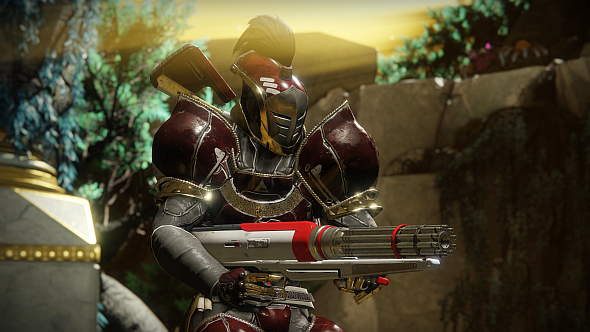
However, it does mean that beating the raid is equal to grinding out public events when it comes to progression; as in the mid-game, Destiny’s best content advances you no faster than its dullest. Even the loot from the raid’s Prestige mode is only distinctive in a cosmetic sense – it has no special perks. Famous guns like Fatebringer, Vision of Confluence, and the Vex Mythoclast had players running the original Destiny’s celebrated Vault of Glass three times a week, and fueled countless stories of joy, disappointment, and envy. There’s none of that now. No-one cares if Inaugural Address drops or not.
This is one of many ways in which Destiny 2 is more casual-friendly. Removing random perks from guns, and power advantages from PvP events, have the same end in mind. It is a risky choice for a loot-driven game; there is a lot of content in Destiny 2, but not so much that Bungie can afford to weaken incentives to re-run the raid. Console players are already complaining there’s not enough to do in the endgame.
It is a shame, as Leviathan is the most ambitious raid in the series yet: a colossal golden palace full of trials that emphasise mechanical execution over pure combat skills. This is a change in focus from some of the original raids that has divided the community somewhat, but personally, I’m a fan. The Gauntlet, in particular, is a brilliantly designed encounter that delivers all the cooing satisfaction of a scalp massage when it goes smoothly. If you want a challenge, this is where you will – finally – find it.
PvP: the Crucible
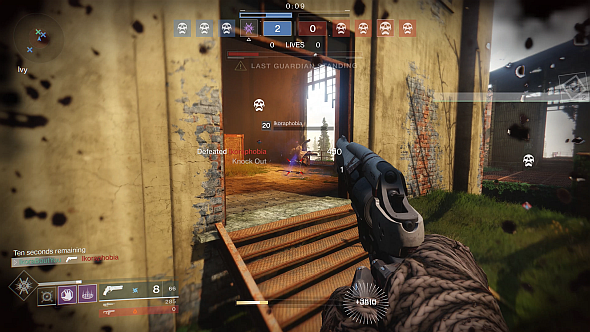
For competitive types, Destiny 2’s PvP mode, the Crucible, offers something unique on PC. There is a hint of COD in the level designs, though the pace is less hectic thanks to larger maps, smaller teams, and higher times-to-kill, which also enable a meaningful headshot bias and thus more skilful gunplay. Varied classes add another tactical layer, but the game is not built around their synergies, as in Overwatch. Power weapons and Super abilities grant play-making potential, outside of which, teamwork is essential for success.
On the downside, this latter point means solo-queueing is hazardous, and, like the strikes, you cannot choose any of the Crucible’s five game modes individually; they are grouped into two playlists. So if you like Control (a zone-capturing mode) but hate Supremacy (Kill Confirmed, transplanted from COD), you are stuffed.
I guess the idea is a less fragmented player pool and thus faster matchmaking, but it is still annoying. Once again, it feels like Destiny 2’s design is saying you are here to grind a bunch of activities for loot, rather than play something specific for its own merits and according to your own choices. I would talk about the Iron Banner and Trials of the Nine PvP events, but with no unique game modes or power advantages, there is little to differentiate them from regular Crucible. Apart from their loot, because of course.
Still, if you enjoy competitive multiplayer, then PvP is one of Destiny 2’s definite successes – it sits in a sweet, distinct spot among its rivals in terms of its pacing and accessibility. And there should be no question of getting it on PC; uncapped frame rates and the immediacy of mouse input make it so much smoother and more responsive on our platform. Going back to PS4 after the PC preview event was genuinely painful.
The Future
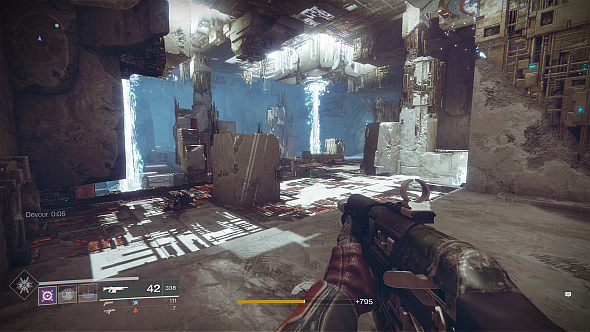
I make a lot of comparisons to the first Destiny in this review. The sequel is a better game in nearly every way, but to be honest, the soft light of that context should not mean much to you, a PC gamer, who did not have to suffer the original’s mistakes. Yes, Destiny has a story now, and an in-game map. It is far more readable, and the painful loading screens that bisected every activity are gone. Having put 600 hours into the first, I am glad of these changes, but why should they impress you?
They should not. They are what you should expect. Instead, it is impressive that Destiny 2 looks, sounds, and feels better than anything on the market, especially on PC. It is capable of occasional, untainted brilliance: the Souls-esque release of beating a Nightfall boss or clearing the raid; pulling off a thrilling clutch in the Crucible; that rare moment in the campaign when sight and sound synchronise just so; or when the camera rests on a scene so gorgeous you have to turn off the HUD and take a screengrab.
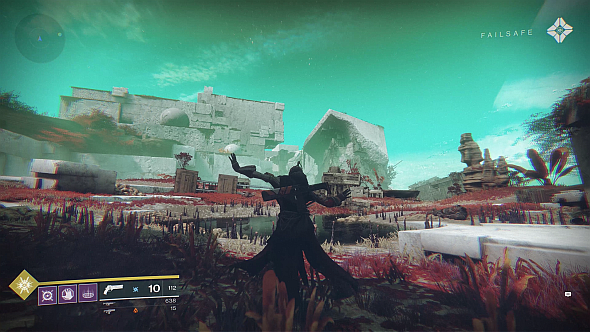
However, aesthetic brilliance and great gunplay can’t wholly save Destiny 2’s campaign from trivial difficulty, repetitive action, and a go-nowhere plot. Its best content in the mid-game and beyond is betrayed by a reward economy that nudges you instead toward a vacuous treadmill made of public events, and which truncates the endgame. Mindlessness abounds. Some of it is by design, while some is, hopefully, accidental, and may be fixed in the future.
It is to Bungie’s continuing credit that their attentiveness to feedback and determination to improve – which eventually turned the original into a decent game – is already in evidence: they have outlined some promising tweaks for Destiny 2’s next season. December’s Osiris DLC will also, finally, tell the story of one of the game’s most interesting characters, and represents a broader opportunity to address some of these problems.
So, if you are not sold, you do not need to decide now. Destiny will undoubtedly go on. It remains a fascinating project: endlessly discussable in its ambition and its frustrating mix of brilliance and ineptitude, and as imitators like The Division and EA’s coming Anthem prove, it is going to define an era, like it or not.
Verdict: 7/10
[ad_1]

